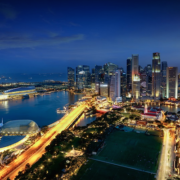Arup Unveils First Future Cities Hub to Drive Innovation and Growth in Southeast Asia
Arup, a global design and consulting firm recently announced the launch of its first Arup Future Cities Hub on its 50th anniversary in Singapore.
Supported by the Singapore Economic Development Board (EDB), the Arup Future Cities Hub will serve as a focal point for Arup’s consulting expertise in advisory, planning and design across Southeast Asia. With Singapore as a springboard, Arup will be working with public agencies and private sector entities on urban development, transport, social and infrastructure in the region.
“Singapore is the home to the best talent, underpinned by high quality infrastructure and regional connectivity. With EDB’s support, we are excited to launch the Arup Future Cities Hub on our 50th anniversary in Singapore,” said Tan Yoong Heng, Arup Singapore’s Office Leader.
He added, “Arup’s vision to shape a better world is closely aligned with Singapore’s economic transformation ambitions from a trade hub to innovation hub. We aim to bring the same bold, progressive and innovative city planning vision and goal to our clients. Our ambition is to bring the design leadership that we have established in Singapore to the future developments in cities across Southeast Asia.”
Southeast Asia is undergoing a process of hyper urbanisation and with the urban populations expected to grow by another 100 million to reach 373 million people in 2030, urban infrastructure planning has become more critical than ever before. Cities in the region will need to address urbanisation challenges and plan for sustainable and resource-efficient infrastructures.
Over the next five years, the Arup Future Cities Hub will focus on strengthening its advisory, planning, design and specialist consulting capabilities to address critical needs. Arup will also be growing its offerings in digital, advisory, urban mobility, infrastructure masterplanning, resilience and sustainability consulting.
Cities and Planning Leader, Neil Walmsley said, “Singapore is a natural choice to build Arup’s Future Cities Hub. The nation has a strong ambition to develop its highly skilled workforce and economic leadership in the region – and we are excited to contribute to nurturing designers, planners, engineers and strategists of the future. The goal for our Future Cities team is to help Singapore develop a resilient, sustainable and smart future, while exporting best practices to the region.”
The Future Cities team will be expected to grow to more than 60 staff, with a balanced, diverse and quality team that combines local knowledge and understanding with a broad range of international expertise by 2023.


